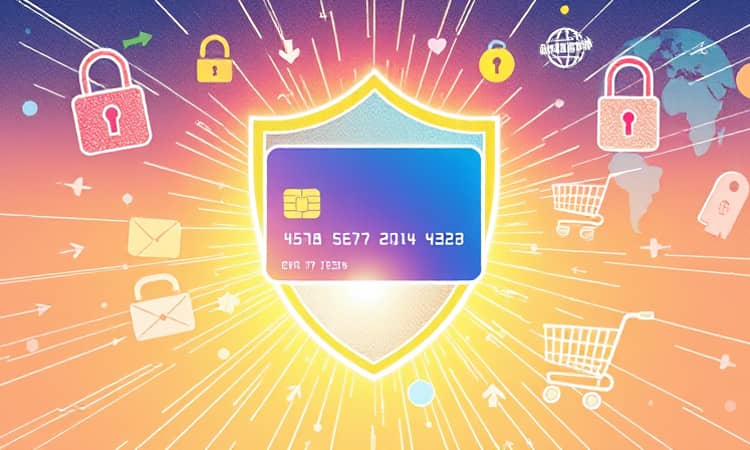In an era of escalating cyber threats and rampant data breaches, safeguarding your financial information has never been more critical. Virtual credit cards offer a modern solution to guard your identity while enjoying the convenience of online purchases.
From definitions and benefits to practical applications and potential drawbacks, this comprehensive guide explores everything you need to know about virtual credit cards and how they can transform your approach to secure spending.
What Are Virtual Credit Cards?
At their core, virtual credit cards are a digital version of a traditional credit card that exist only in electronic form. Issued instantly by your bank or card provider, they come with a unique 16-digit number, security code (CVV), and expiration date that differ from your physical card.
When you generate a virtual credit card, it links directly to your main credit account but masks your real details. This means that the number you provide to merchants is never your actual card, ensuring an extra layer of privacy and security in every online transaction.
Key Benefits of Virtual Credit Cards
Consumers and businesses alike are recognizing the power of these cards. Below are the primary advantages driving widespread adoption:
- Unique, temporary card numbers for each transaction reduce the risk of unauthorized reuse.
- Enhanced security and fraud protection by isolating your real account from merchant data stores.
- Privacy and anonymity for online transactions so merchants never see your actual card.
- Custom expiration dates and spending limits give you precise control over every charge.
- No additional costs or credit inquiries—cards draw from your existing account with no impact on credit score.
- Global acceptance for digital payments with standard foreign transaction fees where applicable.
These benefits combine to create a seamless, secure, and flexible online shopping experience, empowering you to spend with confidence.
Robust Security Features
Security lies at the heart of virtual credit cards. By generating single-use or limited-use virtual cards, you effectively eliminate the risk of recurring unauthorized charges. Even if a merchant’s database is compromised, only the temporary number is exposed, not your primary account.
Additional layers of protection often include two-factor authentication at your bank’s portal, real-time monitoring, and automatic deactivation once the card reaches its set limit or expiration date. According to 2023 data, there were over 3,200 reported cases of data breaches in the United States alone, underscoring the urgency for extra safeguards.
Business Applications and Expense Control
Companies from startups to multinational corporations leverage virtual credit cards to streamline expenditures and improve transparency. Key use cases include vendor payments, travel bookings, marketing campaigns, and software subscriptions.
- Efficient budget control and expense management by assigning cards to specific projects or departments.
- Assign unique virtual card numbers to employees to monitor individual spending in real time.
- Set transaction-specific limits and policies to prevent overspending and reduce administrative overhead.
These features not only enhance financial governance but also simplify reconciliation and accounting processes, eliminating the need for manual expense reports and reducing errors.
Drawbacks and Limitations
No solution is without trade-offs. Virtual credit cards also come with certain constraints that users should consider:
- Limited availability from certain issuers or regions, meaning not everyone has access yet.
- Primarily for online use; physical store purchases are unsupported unless integrated with mobile wallets.
- Some merchants may not accept virtual numbers for recurring subscriptions or reservations.
- Dependence on digital platforms and apps to generate and manage cards securely.
While these limitations may seem restrictive, the vast majority of online retailers accept virtual cards, and mobile wallet integration is rapidly expanding their usability at brick-and-mortar locations.
How Virtual Cards Protect Your Identity and Finances
By masking your real card number, virtual credit cards reduce exposure in data breaches and nullify the value of stolen credentials. If a hacker obtains a one-time virtual number, it cannot be reused beyond its defined parameters.
Moreover, the ability to cancel or modify virtual cards on demand means you maintain easy to cancel or deactivate instantly control over your spending. This agility transforms the way we think about payment safety and personal data privacy.
Who Should Consider Virtual Credit Cards?
Virtual cards cater to a broad audience:
- Frequent online shoppers aiming for peace of mind in every purchase.
- Businesses seeking streamlined payment workflows with audit trails.
- Anyone concerned about identity theft or unauthorized recurring payments.
Whether you are purchasing daily essentials or managing corporate expenses, virtual credit cards deliver unparalleled security with minimal effort.
Summary: Pros and Cons
Conclusion
Virtual credit cards represent a paradigm shift in online payment security. By leveraging custom expiration dates and spending limits alongside disposable numbers, you keep your primary account insulated from potential threats while retaining all the benefits of a traditional credit line.
From everyday consumers seeking greater peace of mind to businesses striving for tighter financial controls, virtual credit cards offer a versatile, cost-effective solution. As digital wallets and mobile integrations mature, their adoption will only grow, ushering in a safer future for global commerce.
Take control of your financial identity today. Explore your issuer’s virtual card offerings and experience the freedom to shop and pay online without hesitation or fear.
References
- https://www.airwallex.com/us/blog/virtual-cards-benefits-and-disadvantages
- https://www.experian.com/blogs/ask-experian/pros-cons-virtual-credit-cards/
- https://www.mastercard.com/news/perspectives/2024/what-are-virtual-cards/
- https://www.getpliant.com/en/blog/virtual-credit-card/
- https://statrys.com/blog/what-is-a-virtual-credit-card
- https://www.unsw.edu.au/news/2023/05/can-virtual-credit-cards-shield-you-against-identity-theft-
- https://www.cnet.com/personal-finance/credit-cards/fraud-proof-your-online-purchases-why-virtual-cards-are-your-new-best-friend/
- https://chargebacks911.com/virtual-credit-card/














